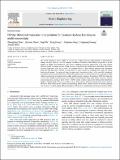HiTrip: Historical trajectory interpolation for trawlers via deep learning on multi-source data
Author(s)
Zhao, Zhongning; Chen, Jiaxuan; Shi, Yuqi; Hong, Feng; Jiang, Guiyuan; Huang, Haiguang; Zhao, Jinhua; ... Show more Show less
DownloadPublished version (4.582Mb)
Publisher with Creative Commons License
Publisher with Creative Commons License
Creative Commons Attribution
Terms of use
Metadata
Show full item recordAbstract
The Vessel Monitoring System (VMS) on trawlers has revolutionized our understanding of spatiotemporal fishing activities. However, the low temporal resolution of historical VMS datasets complicates a precise analysis of fishing effort distribution. One inherent challenge for precise interpolation is the stark contrast between trawler movement patterns during steaming, characterized by straight lines, and fishing, which often involves consecutive turns. In this study, we introduce HiTrip, a deep learning approach that interpolates historical VMS data from two-hour intervals down to three minutes by harnessing both VMS and marine hydrological datasets. The proposed deep learning model, integrating ResNet, LSTM, and MLP, seamlessly synthesizes spatial features from coarse fishing effort distributions, sea surface factor fields, and current fields, while accounting for the temporal relationships within trajectory segments. Evaluated on 1855 East China Sea trawler VMS records and Copernicus Climate Data Store hydrological factor data, HiTrip achieves a 0.20 km interpolation error, meeting a finery 0.005° × 0.005°spatial resolution demand for fishing effort distribution analysis. Ablation study validates the efficacy of our deep learning model integrating multi-source datasets. Moreover, when evaluated on a diverse Global Fishing Watch dataset, which includes 45 trawlers spanning various global maritime regions, HiTrip maintains a 0.40 km error, emphasizing its broad generalization ability.
Date issued
2024-01Department
Massachusetts Institute of Technology. Department of Urban Studies and PlanningJournal
Ocean Engineering
Publisher
Elsevier BV
Citation
Zhao, Zhongning, Chen, Jiaxuan, Shi, Yuqi, Hong, Feng, Jiang, Guiyuan et al. 2024. "HiTrip: Historical trajectory interpolation for trawlers via deep learning on multi-source data." Ocean Engineering, 292.
Version: Final published version